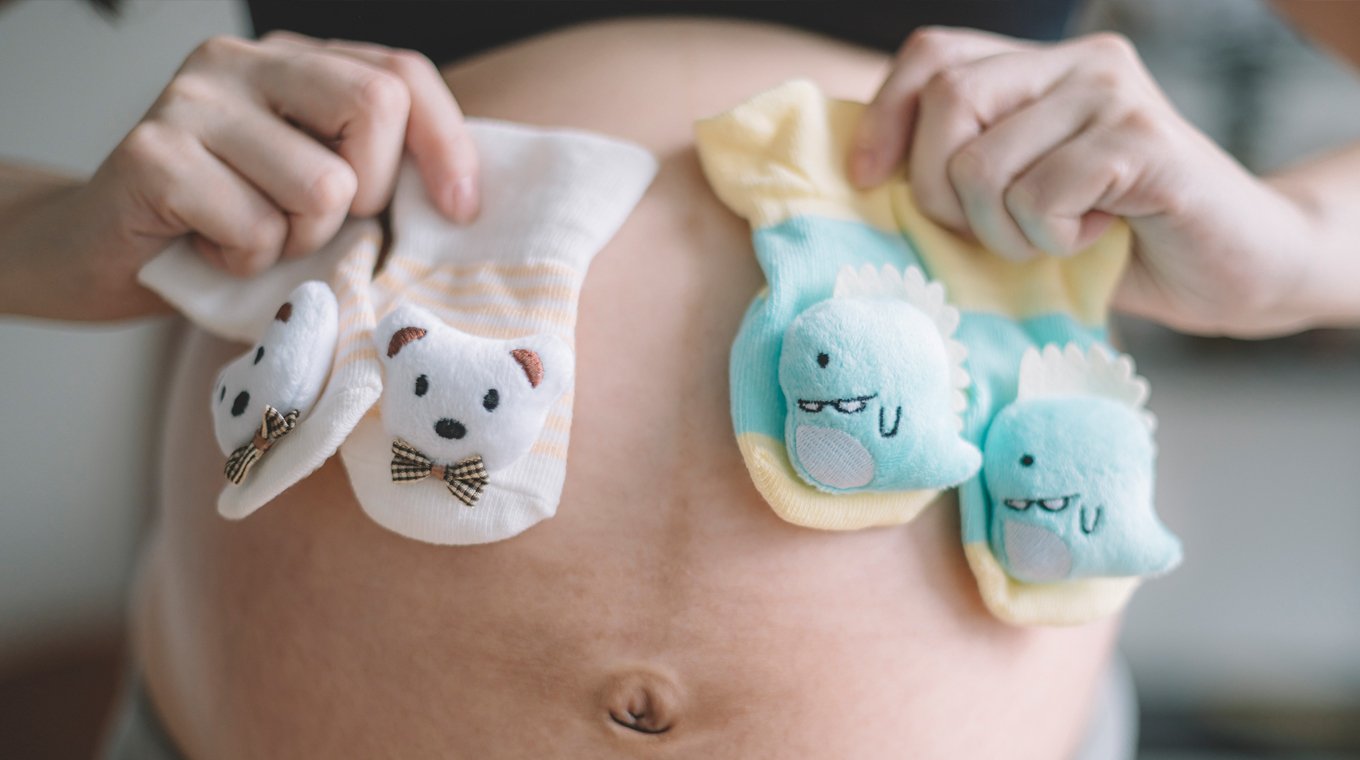
In this article
You had your game plan in place for having your baby — until you found out you’re having babies — as in, twins! Now you’re not sure where to start with your twin birth plan; including details for two babies will be more complicated than for just one, you might think. Actually, it really won’t be. Read on for everything you need to know about making a twin birth plan.
What is a birth plan?

A birth plan is another piece of preparation when having a newborn. It outlines the moment leading up to the birth and communicates your wants and needs to your support system. Not only will it help you be as informed about your options as possible, but it’ll help others know how to support you during such an exciting and possibly hectic time.
Finding a doctor and hospital staff that listen and support your preferences is imperative to a positive birth experience, as they can “profoundly impact your birth experience,” Janet Bogardus, a Lamaze certified childbirth educator at Mount Sinai West in New York City, told The New York Times. “You want to make sure the protocols of the hospital are in line with your thinking.” If your doctor dismisses your preferences or keeps pushing for an option you feel strongly against, keep looking. You’ll also want to make sure your doctor has experience with multiples births!
How twins can change your birthing plan
Receiving the news that you’re going to have twins is enough to flip your world upside down, so take the following into consideration while drafting your birth plan. Twin pregnancies are more often complicated by gestational diabetes, preeclampsia, or placental abruption, along with other complications that can throw a monkey wrench into your birth plan.
A twin pregnancy is higher risk than pregnancy with one baby, for several reasons. In a twin pregnancy, you have twice as many chances for the baby to be upside down or sideways, necessitating a Cesarean delivery. In the United States, 75% of twins were delivered by Cesarean in 2008.
The biggest complication for a twin birth is preterm birth, which also means it’s smart to create a birth plan well in advance. Twins are also more likely to deliver prematurely, before 37 weeks. Premature babies born before 37 weeks of pregnancy have a higher risk of health problems, like issues with staying warm and potentially learning and behavioral disabilities later in life. Your doctor may recommend early delivery depending on your pregnancy.
As you create a birth plan and weigh your options, it’s important to remain flexible and realize that having twins means more than twice the likelihood of problems arising that will put roadblocks in the way of your “perfect” birth. “Some of my births have aligned closely with my plan,” mom Gretchen Bassio wrote for Mom.com. “Others have strayed so far that it felt like I was watching from up above. Like, no way is this happening to me in this way, it’s nothing like I imagined.”
What to include in your birthing plan for twins

Although most of your birth plan will remain similar to the birth plan of a singleton, we decided to cover the most important parts of a twin birth plan below.
- Transportation, since twins can come quite early. Talk with your doctor about where you want to deliver well ahead of your due date and what to do if your babies need transportation.
- Your contact information, including your name and who you’re planning to have with you in the room
- Birthing environment to help you feel most comfortable. Would you like the lights dimmed? Would you like a quiet environment with only a couple people there? What kind of music would you like?
- Labor preferences for when you go into labor. Would you like to take a hot bath or be able to walk around freely or use a birthing chair?
- Pain management preferences, with consideration that in the moment, you might decide to have an epidural. Talk to your doctor about your options.
- Delivery preferences like a vaginal birth or C-section. More on this below.
- Postpartum care, since if your babies are big enough, both can stay in your room. Your birth plan can also discuss common issues, such as whether or not you want your baby boy circumcised or whether you want to avoid supplemental feedings, vitamin K administration, or antibiotic eye drops. Also think about if you want immediate skin-to-skin contact.
Other things to consider:
- If both your babies need procedures done, you can certainly request to have them done at different times so you can be present with both either during or right after the procedure.
- When it comes to breastfeeding twins, it can be trickier than nursing just one baby. Ask for help from the hospital lactation consultation or your nurse as soon as possible, so you get nursing off on the right foot with both babies.
To guide your birthing plan, be sure to have your doctor and anyone else who will be in the room with you — like your partner and a doula — take a look.
Examples of twin birth plans

Below are some more details on vaginal delivery versus Cesarean plans and certain requests to think about.
Vaginal delivery requests
If you’re having a vaginal delivery, your birth plan labor requests won’t really differ from those you would make if you were having just one baby. Labor requests in birth plans often center on location: Do you want to labor in bed, the birthing pool, or while strolling the halls?
Pain medication
This is another typical mention in birth plans: Do you want the option, or do you want anyone who mentions the word epidural banned from your room?
Fetal monitoring
How much, how long, when, and where? Your doctor might be less likely to leave the fetal monitors off if you’re having twins, since twins are at higher risk of getting tangled up in each other’s cords and going into fetal distress. If he insists on an intravenous infusion, ask if a saline lock, which gives immediate access to a vein, would do.
Feeding
Even if you’re having two babies, there’s no reason you can’t ask to hold or nurse both right after birth, as long as they’re not too premature or having any respiratory or other complications at delivery.
Episiotomy
Because both babies don’t come out at the same time in a vaginal delivery, there’s also no reason why you can’t request that your practitioner not do an episiotomy.
Pushing
Pushing in an upright position, or squatting or pushing in the birthing pool, should be no more problematic when you’re having twins than when you’re having just one, except for the difficulty of monitoring baby number two when you’re giving birth to number one.
Cesarean requests
The only difference in making a birth plan for two if you’re having a Cesarean delivery is to ask to have two arms free during the surgery, one for each baby.
You might also want to think about what you want done if one baby has to go to the neonatal intensive care and the other doesn’t, or what you would like done if both babies need observation. If they’re in stable condition but just need extra warmth and monitoring, you might want them both in the same isolette or warmer. If they need intensive care, this might not be possible, since keeping two sets of tubes and wires in place could result in errors or accidents.
Suzanne Robin is a registered nurse with more than 25 years of experience in oncology, labor/delivery, neonatal intensive care, infertility, and ophthalmology. She also has extensive experience working in home health with developmentally delayed or medically fragile children. Robin received her RN degree from Western Oklahoma State College. She has coauthored and edited numerous books for the Wiley “Dummies” series.




